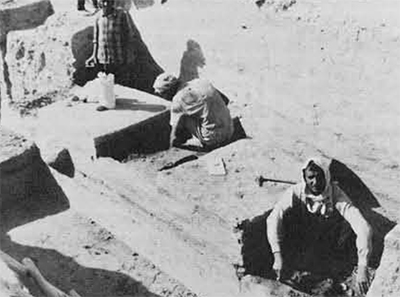|
Other Archaeological Sites / The Neolithic of the Levant (500 Page Book Online) Tepe Ali Kosh The first modern archaeological work on the Deh Luran plain excavated the early village site of Tepe Ali Kosh and the later village of Tepe Sabz. The project used systematic sieving techniques to recover all artifacts and animal bones and water flotation to recover ancient carbonized seeds. Seven cultural phases were defined. Evidence of the beginning of plant cultivation, early goat and sheep herding and the early use of irrigation were found in these excavations ... ... Agriculture is also evidenced in the southwest of Iran at a site known as Ali Kosh. This villages was occupied from about 10000 years ago. These was evidence that winter grown wheat and barley were exploited. Ali Kosh supported about 100 people so represents a small village. The archaeologists who excavated Ali Kosh were trying to find out more about the economic life of a pre agricultural community and the evolution of the domesticated agricultural adaptation. They found a series of distinct phases through the occupation: Ali Kosh phase: (8700-7550 BP). Greater reliance upon domesticated crops within an economic structure built around hunting and gathering. Goat bones are now all of domesticated animals. Greater reliance upon domesticated emmer and barley (40% of seeds recovered) After this period the population expanded greatly in the region of Ali Kosh. There are more and more sites and larger village structures. There was more agriculture which led to greater surpluses and populations ... |
